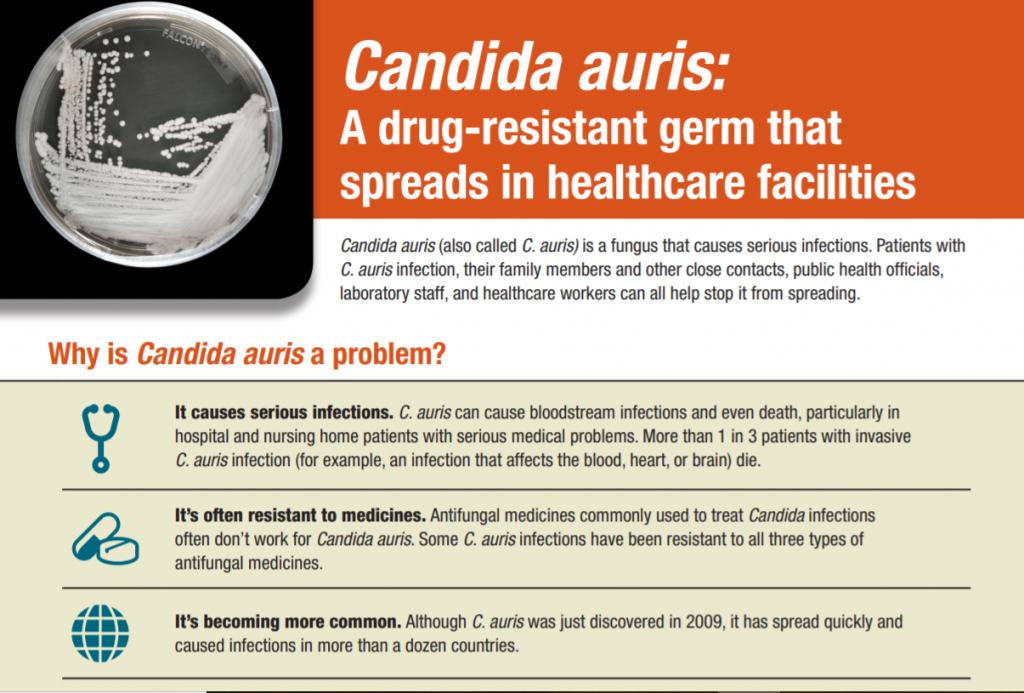More than 250 confirmed and probable Candida auris cases have been reported in the United States since July 31, 2017.

As of June 30, 2018, the Centers for Disease Control and Prevention (CDC) put the number at 369 (340 confirmed and 29 probable).
New York State has recorded the lion’s share with 200 confirmed and probable. An additional 643 patients have been found to be colonized with C. auris by targeted screening in four states with clinical cases.
Candida auris is an emerging fungus that presents a serious global health threat. C. auris causes severe illness in hospitalized patients in several countries, including the United States. Patients can remain colonized with C. auris for a long time and C. auris can persist on surfaces in healthcare environments. This can result in spread of C. auris between patients in healthcare facilities.
CDC is concerned about C. auris for three main reasons:
- It is often multidrug-resistant, meaning that it is resistant to multiple antifungal drugs commonly used to treat Candida infections.
- It is difficult to identify with standard laboratory methods, and it can be misidentified in labs without specific technology. Misidentification may lead to inappropriate management.
- It has caused outbreaks in healthcare settings. For this reason, it is important to quickly identify C. auris in a hospitalized patient so that healthcare facilities can take special precautions to stop its spread.
Related:
- Apply for the Johns Hopkins Center for Health Security Fellowship Opportunity at SynBioBeta 2018
- New Data Show Dramatic Progress in Namibia Toward HIV Epidemic Control and Substantial Gaps in Cote d’Ivoire and Cameroon
- ‘Triple E’ update in Florida
- Romania: 5 meningitis cases caused by West Nile virus
- West Virginia hepatitis A outbreak now at 700 cases


